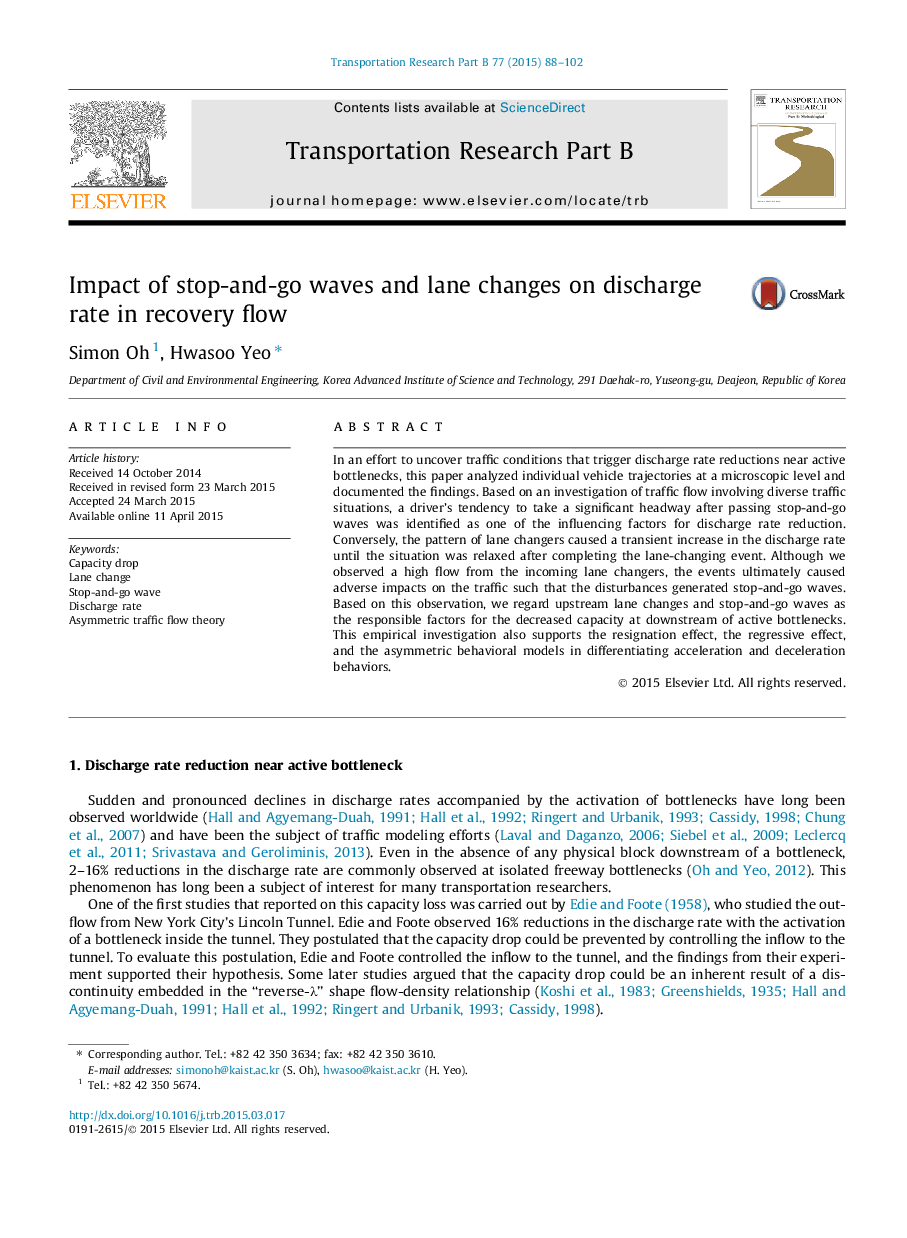| Article ID | Journal | Published Year | Pages | File Type |
|---|---|---|---|---|
| 1131835 | Transportation Research Part B: Methodological | 2015 | 15 Pages |
•We exhibit the practical behavior of lane changer temporarily accepting small gaps.•We quantify the detail impact of lane change triggering local oscillations.•Stop-and-go wave is one of the main causal factors for capacity drop.•There is a detrimental impact of severity of stop-and-go wave on the discharge rate.•The observation has good agreement with the previous traffic flow theories.
In an effort to uncover traffic conditions that trigger discharge rate reductions near active bottlenecks, this paper analyzed individual vehicle trajectories at a microscopic level and documented the findings. Based on an investigation of traffic flow involving diverse traffic situations, a driver’s tendency to take a significant headway after passing stop-and-go waves was identified as one of the influencing factors for discharge rate reduction. Conversely, the pattern of lane changers caused a transient increase in the discharge rate until the situation was relaxed after completing the lane-changing event. Although we observed a high flow from the incoming lane changers, the events ultimately caused adverse impacts on the traffic such that the disturbances generated stop-and-go waves. Based on this observation, we regard upstream lane changes and stop-and-go waves as the responsible factors for the decreased capacity at downstream of active bottlenecks. This empirical investigation also supports the resignation effect, the regressive effect, and the asymmetric behavioral models in differentiating acceleration and deceleration behaviors.
Graphical abstractFigure optionsDownload full-size imageDownload as PowerPoint slide
